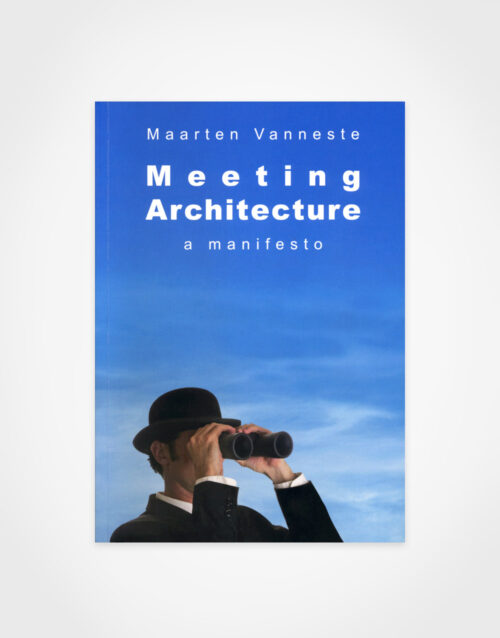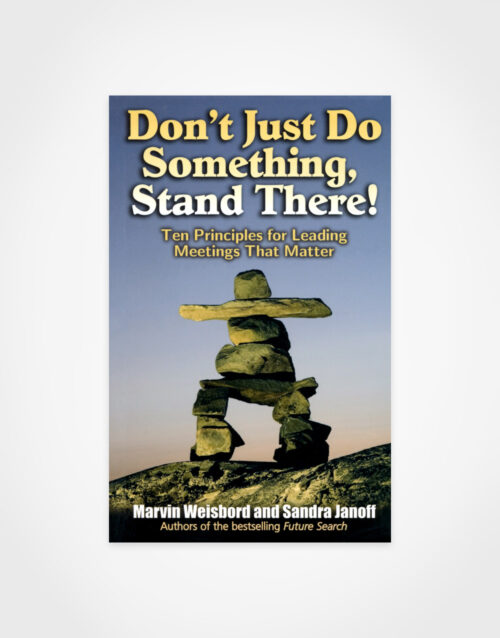-


Getting Immediate, Quantifiable, Business Results with Electronic Meetings
by Alan Weatherall & Professor Jay Nunamaker An easy to read business book, describing how to get results and business benefits from the use of Electronic Meetings. Electronic Meetings use a network of computers to improve communication in a meeting or workshop. Early results from IBM and Boeing indicated a reduction of 50% in meeting duration comparing Electronic Meetings with conventional meetings. The book describes what Electronic Meetings are, where they are used and how to implement them successfully. -


Basic Principles of Meeting Design
by Eric de Groot & Mike van der Vijver Into the Heart of Meetings is a book about the essential processes that take place during meetings and how to influence these processes through Meeting Design in order to obtain the best outcomes. Into the Heart of Meetings is the first book ever about Meeting Design, a new profession that has taken shape over the past 10 years but that is still far from mature. The authors introduce the main principles that underlie the profession, as well as the main practical issues that Meeting Designers face and need to solve. As a result, Into the Heart of Meetings is both an explorative study and a textbook. Its enormous number of practical cases puts the content in day-to-day working practice. -


The Art of Exhibiting at Trade Shows and How to Make Money From It
by Mikael Jansson Trade shows – used correctly – are the single most important point of contact between a company and its market. During the intense few days of a show a company has meetings that can have a powerful effect on its future. -


A Handbook For Facilitators
av Maria Eliasson & Pia Villför Larsson In this book, we explore the intricacies of the workshop, a meeting in which the participants are encouraged to be active and create a desired result, under the guidance of a neutral leader. In the context of a workshop, a neutral leader of this kind is also known as a facilitator. -


Verktygslåda för kreativa och lärande möten
av Mari Almgren & Kari Österling En bok om möjligheten till lärande i olika sammanhang, om kompetensanvändning i våra organisationer, kompetens som inte synliggörs och därför inte används. I boken motiverar författarna varför det är så viktigt att börja använda nya mötesmetoder och arbetssätt för att öka effektivitet och lönsamhet. Med boken vill författarna väcka lust att våga pröva nya mötesformer och arbetssätt. Genom att fokusera processen (vägen till målet) går det att höja effektiviteten i våra möten. Bättre kommunikation och dialog förbättrar "samlärandet" och kvaliteten i den efterföljande handlingen. Det är i mötet mellan individer som det händer – lärande, utveckling och nytänkande. Förmågan att kommunicera är avgörande för resultatet. Inte bara vad vi säger utan även hur det sägs. -


Handbok i hur du blir en bättre värd och gör fler affärer
av Karl Mikael Cakste & Jonas Widegren Välkommen! Det personliga mötet är effektivaste men också det dyraste sättet att kommunicera med dina affärsrelationer. Utnyttjar du tiden maximalt när du väl får tid med dina kunder? Vare sig det handlar om en lunch, middag eller ett stort event, om ett möte med fyra personer eller fyra hundra, så kan de flesta företag bli mycket mer professionella i konsten att vara värd för ett affärsmöte. -


A Manifesto
by Maarten Vanneste This Award winning book is for those that organize or plan meetings, conferences or events. It is a manifesto for the discipline of Meeting Architecture. It reveals the process and a set of tools for designing better, more effective, high impact meetings, conferences and events. -


The Definitive Resource on Today's Best Methods for Engaging Whole Systems
by Peggy Holman, Tom Devane & Steven Cady with over 90 International Contributors Originators and practitioners of such change methods as Future Search, Real Time Strategic Change, Gemba Kaizen, and Open Space Technology outline the distinctive aspects of their approaches, detail roles and responsibilities, share stories illustrating their use, and answer frequently asked questions. A comparative chart allows readers to evaluate the methods to find the one that seems best for them.



